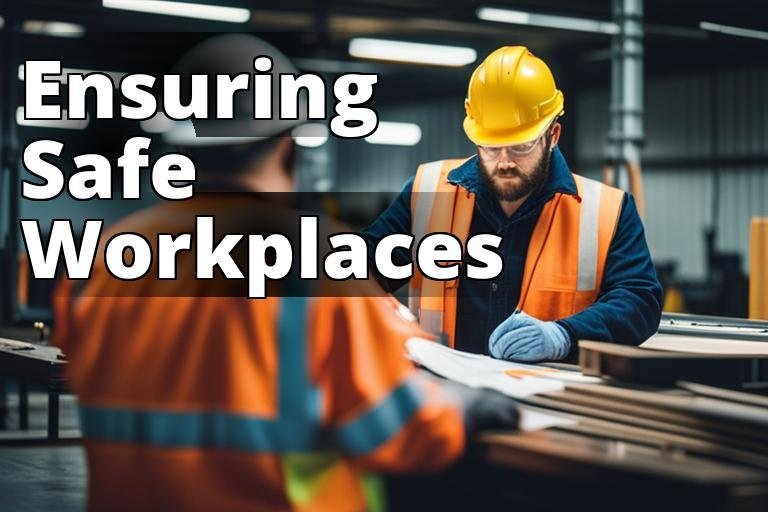Are you an employer looking to ensure a safe workplace for your employees? Then conducting regular safety audits is one of the most effective ways to achieve this. Safety audits systematically evaluate workplace safety to identify potential hazards, evaluate risks, and make recommendations for improvements. Here’s what you need to know about safety audits, their importance, and how to conduct them effectively.
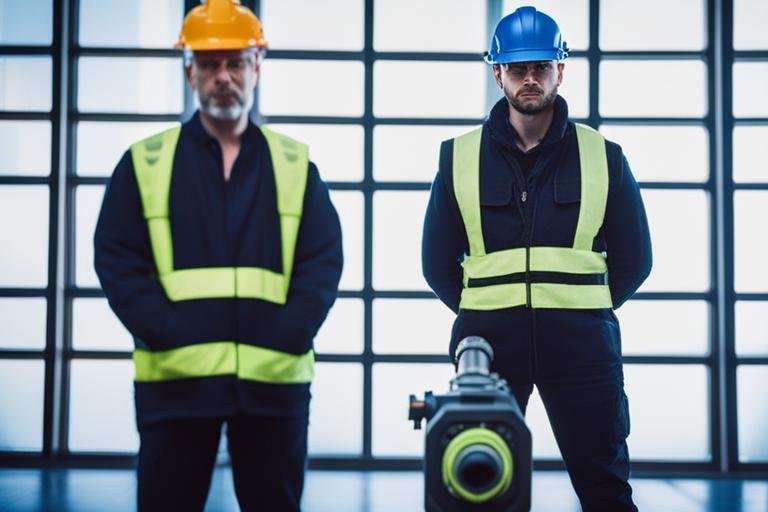
Overview of Safety Audits
Safety audits are a crucial component of any health and safety program. They are a systematic and objective evaluation of workplace safety. Safety audits help to identify potential hazards, evaluate risks, and make recommendations for improvements. There are three main types of safety audits: process safety audits, behavioral safety audits, and compliance safety audits. Each type of audit focuses on a specific aspect of workplace safety.
Importance of Safety Audits
- Safety audits identify potential hazards and prevent accidents and injuries in the workplace.
- Types of safety audits include process, behavioral, and compliance audits.
- Preparing for safety audits involves reviewing policies and procedures, employee training, and conducting a walk-through.
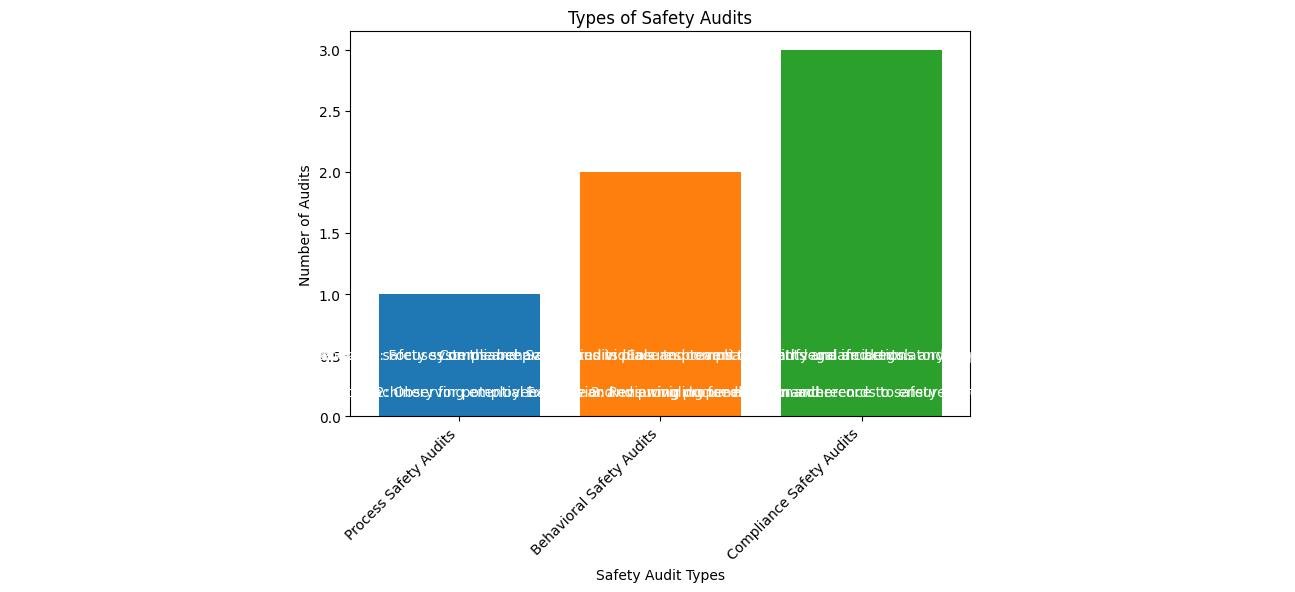
Types of Safety Audits
Process Safety Audits
Process safety audits focus on the design, operation, and maintenance of equipment and systems that are critical to the safety of the workplace. These audits evaluate the effectiveness of the systems and procedures in place to prevent accidents and incidents.
Behavioral Safety Audits
Behavioral safety audits focus on the behavior of employees and their adherence to safety procedures. These audits evaluate how well employees understand and follow safety policies and procedures and identify areas where additional training is needed.
Compliance Safety Audits
Compliance safety audits focus on ensuring compliance with regulations and laws related to workplace safety. These audits evaluate whether the workplace is meeting legal requirements and identify areas where additional measures may be needed to ensure compliance.
Importance of Safety Audits
Safety audits are essential for maintaining a safe workplace. They help to identify potential hazards before they become accidents or incidents, and they provide an opportunity to evaluate and improve workplace safety. Here are some of the key benefits of safety audits:
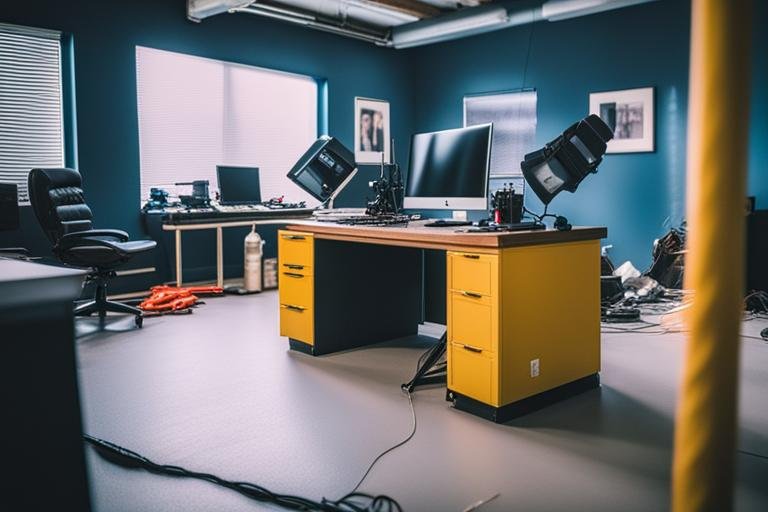
Identifying Potential Hazards
Safety audits help to identify potential hazards in the workplace such as slippery floors, faulty wiring, or unsecured equipment. By evaluating the workplace systematically, safety audits can identify hazards that may not be apparent during day-to-day operations. This allows employers to take proactive measures to eliminate or minimize potential hazards.
Preventing Accidents and Injuries in the Workplace
Safety audits help to prevent accidents and injuries in the workplace. By identifying potential hazards and evaluating risks, safety audits can help employers to take proactive measures to prevent accidents and injuries from occurring. For example, identifying faulty machinery and repairing it before an accident occurs.
Preparing for Safety Audits
Before conducting a safety audit, it is essential to prepare adequately. This involves reviewing safety policies and procedures, ensuring that employees are adequately trained, and conducting a walk-through of the workplace.
Importance of Safety Audits: Real-Life Example
One of the most compelling reasons for conducting regular safety audits is to prevent accidents and injuries in the workplace. In 2018, a manufacturing company in Ohio experienced a devastating accident that could have been prevented with a safety audit.
The company had been cutting corners on safety measures, ignoring warnings from employees and regulators. During a routine operation, a piece of machinery malfunctioned and caused a massive explosion, injuring several employees and causing significant damage to the facility.
After an investigation, it was determined that the accident was caused by a lack of proper safety protocols and training. The company was fined heavily and suffered a significant loss of reputation.
The company quickly implemented a series of safety audits, focusing on process and compliance safety measures. The audits identified several hazards and risks that had been overlooked in the past. The company invested in employee training and implemented new safety protocols to prevent similar accidents from happening in the future.
The result was a safer workplace, with fewer accidents and injuries. The company regained its reputation and the trust of its employees and customers. This real-life example highlights the importance of safety audits in preventing accidents and injuries and maintaining a safe and healthy workplace.
Reviewing Safety Policies and Procedures
Reviewing safety policies and procedures is essential to ensure that they are up-to-date and effective. Employers should review safety policies and procedures regularly and make changes as necessary based on feedback and evaluations.
Employee Training
Employee training is essential to ensure that employees understand safety policies and procedures and are aware of potential hazards in the workplace. Employers should provide regular training to employees and ensure that they are aware of any changes to safety policies and procedures. For example, providing training on proper lifting techniques to prevent back injuries.
Conducting a Walk-Through of the Workplace
Conducting a walk-through of the workplace is essential to identify potential hazards and evaluate risks. Employers should walk through the workplace systematically, evaluating each area for potential hazards and making notes of any areas that need improvement. For example, identifying a wet floor in the cafeteria that needs to be cleaned and marked with caution signs.
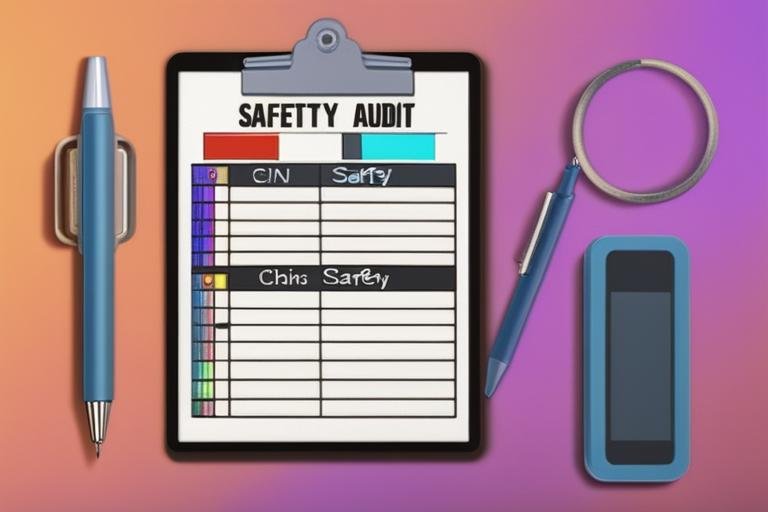
Conducting a Safety Audit
Conducting a safety audit involves evaluating the workplace systematically, identifying hazards, evaluating risks, and making recommendations for improvements.
Identifying Hazards
Identifying hazards involves evaluating the workplace for potential hazards such as blocked emergency exits, lack of safety gear, or chemical spills. This can include anything from loose electrical cords to outdated equipment.
Evaluating Risks
Evaluating risks involves assessing the likelihood and severity of potential hazards. This allows employers to prioritize areas for improvement and take proactive measures to prevent accidents and injuries. For example, assessing the risk of an employee being struck by a falling object and implementing measures to prevent it.
Making Recommendations for Improvements
Making recommendations for improvements involves identifying areas where additional measures are needed to improve workplace safety. This can include anything from updating safety policies and procedures to providing additional training to employees. For example, recommending the installation of safety barriers in a warehouse to prevent forklift accidents.
Follow-Up After Safety Audits
After conducting a safety audit, it is essential to follow up on recommended improvements and monitor progress.
Implementing Recommended Improvements
Implementing recommended improvements is essential to ensure that the workplace is safe for employees. Employers should prioritize recommended improvements and take proactive measures to implement them as quickly as possible. For example, repairing a damaged stair rail to prevent falls.
Monitoring Progress
Monitoring progress is essential to ensure that recommended improvements are effective. Employers should monitor progress regularly and make changes as necessary based on feedback and evaluations. For example, monitoring the use of personal protective equipment to ensure compliance with safety policies.
Benefits of Safety Audits
The benefits of safety audits include:
Improved Employee Safety
Safety audits help to improve employee safety by identifying potential hazards and taking proactive measures to prevent accidents and injuries.
Reduced Risk of Accidents and Injuries
Safety audits help to reduce the risk of accidents and injuries in the workplace by identifying potential hazards and evaluating risks.
Compliance with Regulations
Safety audits help to ensure compliance with regulations and laws related to workplace safety. This can help to avoid fines and other penalties associated with non-compliance.
Conclusion
In conclusion, safety audits are essential for maintaining a safe and healthy workplace. Employers should conduct regular safety audits to ensure that their workplace is safe for employees. By identifying potential hazards, evaluating risks, and making recommendations for improvements, safety audits help to prevent accidents and injuries and ensure compliance with regulations. Ultimately, a safe workplace benefits everyone involved.
Frequently Asked Questions
What is a safety audit?
A safety audit is a systematic evaluation of workplace safety to identify hazards.
Who should conduct safety audits?
Trained safety professionals or consultants should conduct safety audits.
How often should safety audits be conducted?
Safety audits should be conducted annually, or whenever there is a significant change in the workplace.
What if a safety audit identifies hazards?
The hazards should be documented and corrected promptly to prevent accidents.
How can safety audits benefit a company?
Safety audits can reduce workplace accidents and insurance premiums, and improve employee morale.
What if employees resist safety audits?
Explain that safety audits are necessary to ensure a safe workplace for everyone, and that their input is valuable in identifying hazards.

